Timeline: Highlights from a century of signature kicks
The branding relationship between high-profile basketball players and the shoes they wear is nearly as old as the game of basketball itself. Below are highlights from the last century of signature kicks — along with a few other sneakers that changed the game.
1934 | Converse Chuck Taylor All Star
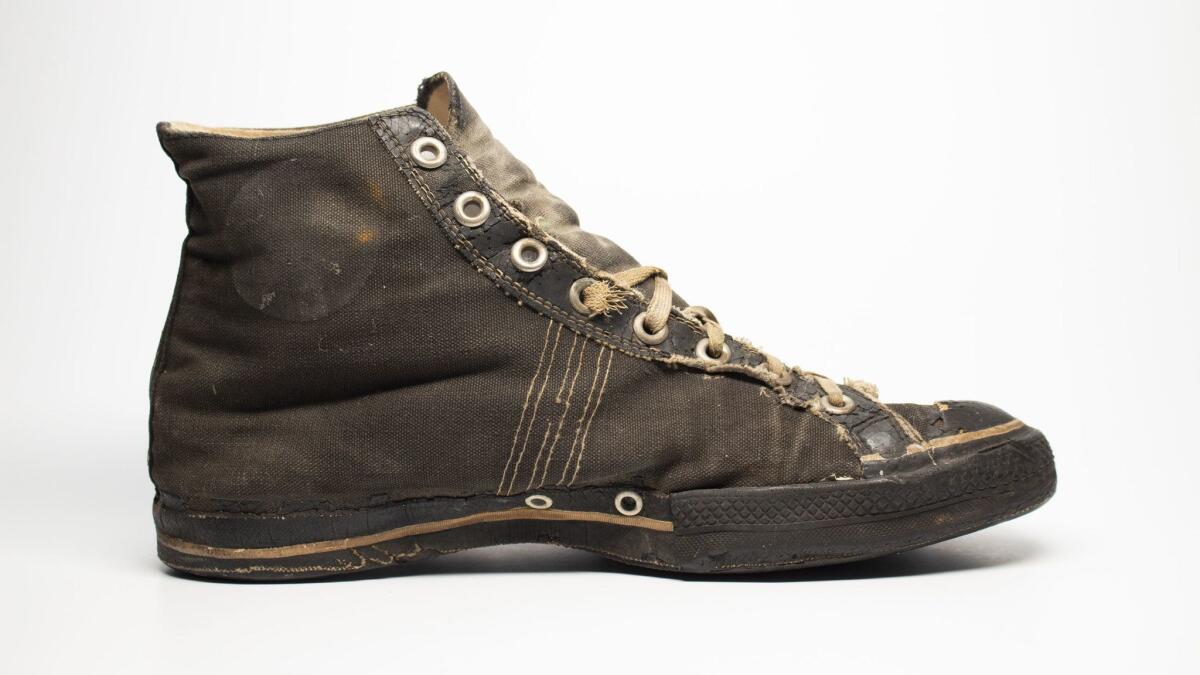
The Converse Rubber Shoe Co.’s basketball-specific All Star silhouette was introduced in 1917, and salesman (and former player for the Akron, Ohio, Firestone Non-Skids) Charles “Chuck” Taylor started organizing basketball clinics for the company in 1922. However, it wasn’t until 1934 that his name was added to the shoe, making him the godfather of basketball signature sneakers.
1958 | PF Flyers Bob Cousy All-American
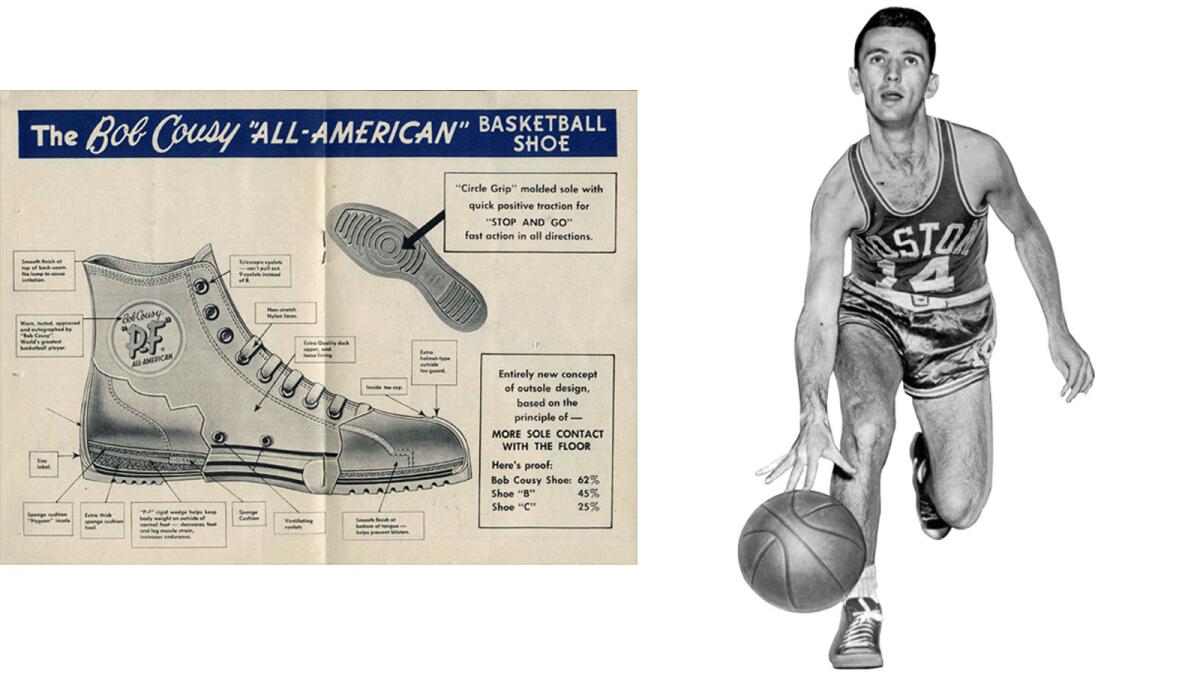
Boston-based PF Flyers (now owned by New Balance) worked with Boston Celtics point guard Bob Cousy to create this basketball shoe with a canvas upper, vulcanized rubber sole and Cousy’s signature on the insole. Did it bear a striking resemblance to the Chuck Taylor? Absolutely. Did that matter? The 14 million pairs sold that first year would indicate no.
1971 | Adidas Superstar Kareem Abdul-Jabbar
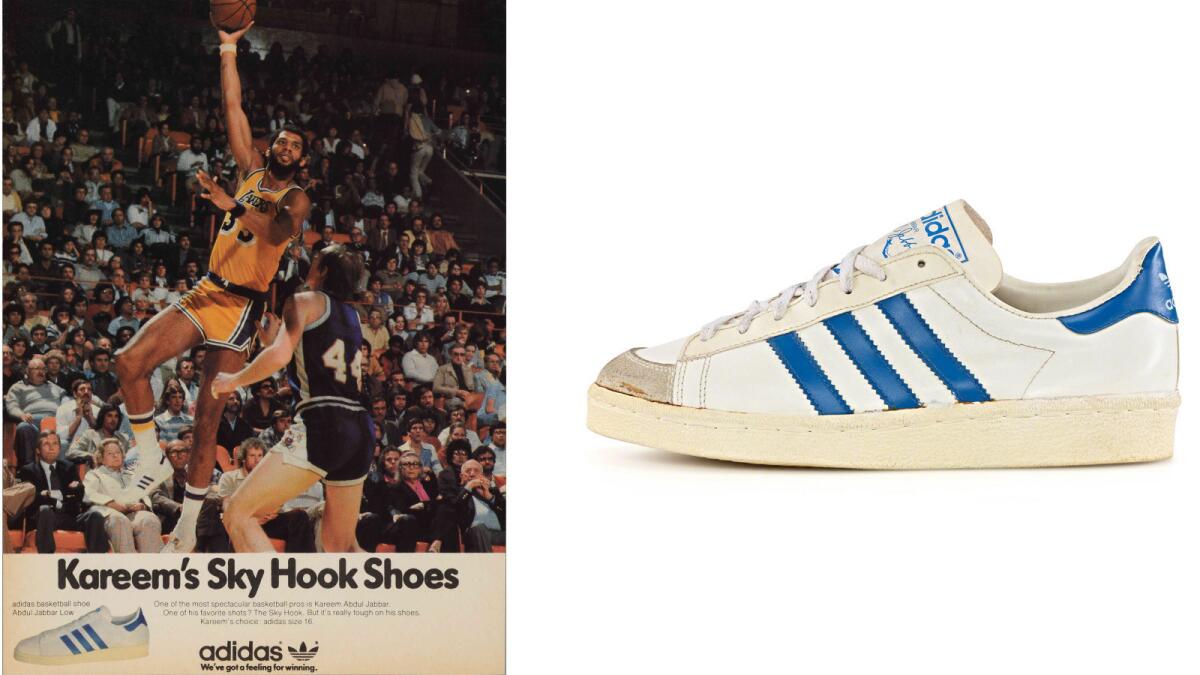
The same year Ferdinand Lewis Alcindor Jr. led the Milwaukee Bucks to an NBA championship — and changed his name to Kareem Abdul-Jabbar — he inked an endorsement deal that put his signature and smiling visage on the tongue of Adidas’ Superstar sneaker. The silhouette itself had launched in late 1969, but its affiliation with the future Hall of Famer helped make the brand’s iconic trio of stripes familiar to generations of basketball fans.
1972 | Nike Blazer

The Nike Blazer silhouette (named in honor of the Portland Traiblazers), which debuted on the feet of players Sidney Wicks and Geoff Petrie in 1972 (and hit retail the following year), isn’t technically a signature shoe, but it merits mention because it marked the brand’s first major move into basketball-specific sneakers, putting the big, bold side swoosh front and center for swish after swish.
1973 | Puma Clyde
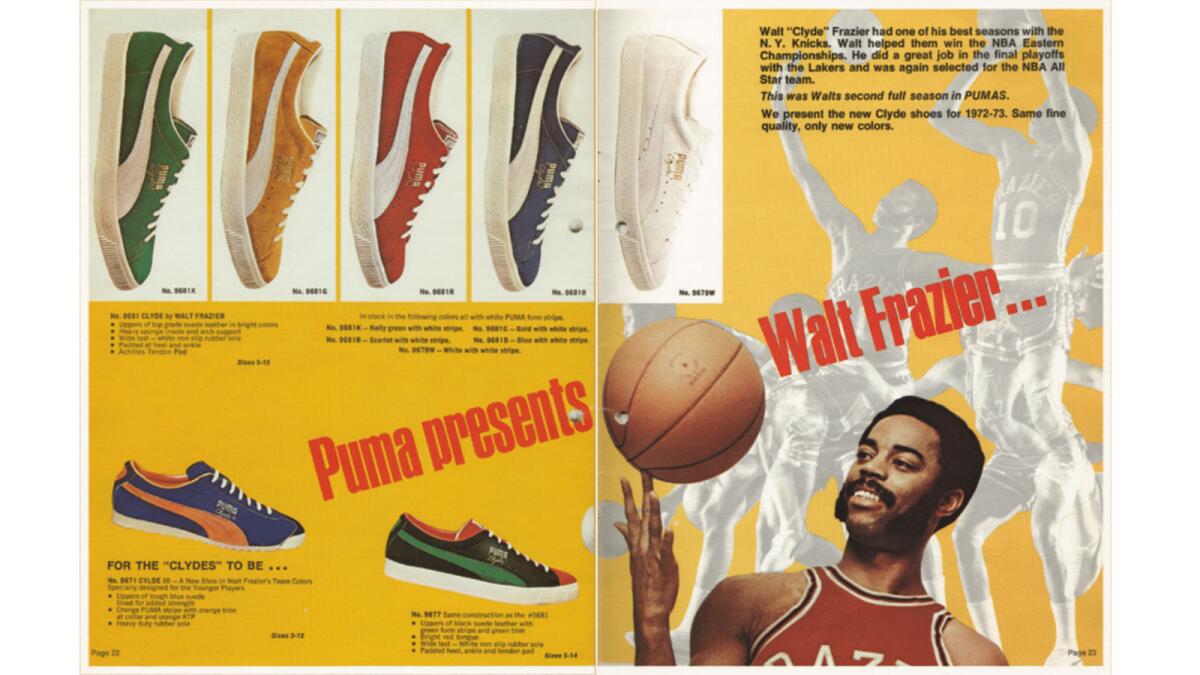
Puma’s foray into the signature basketball shoe arena came on the feet of the New York Knicks’ Walt “Clyde” Frazier, who collaborated with the brand to create a low-top sneaker that addressed his desire for a lighter shoe with more inside padding. The partnership was so successful that last year, more than four decades after the shoe launched, Puma signaled its reentry into the basketball business by inking a lifetime deal with Frazier.
1985 | Air Jordan I
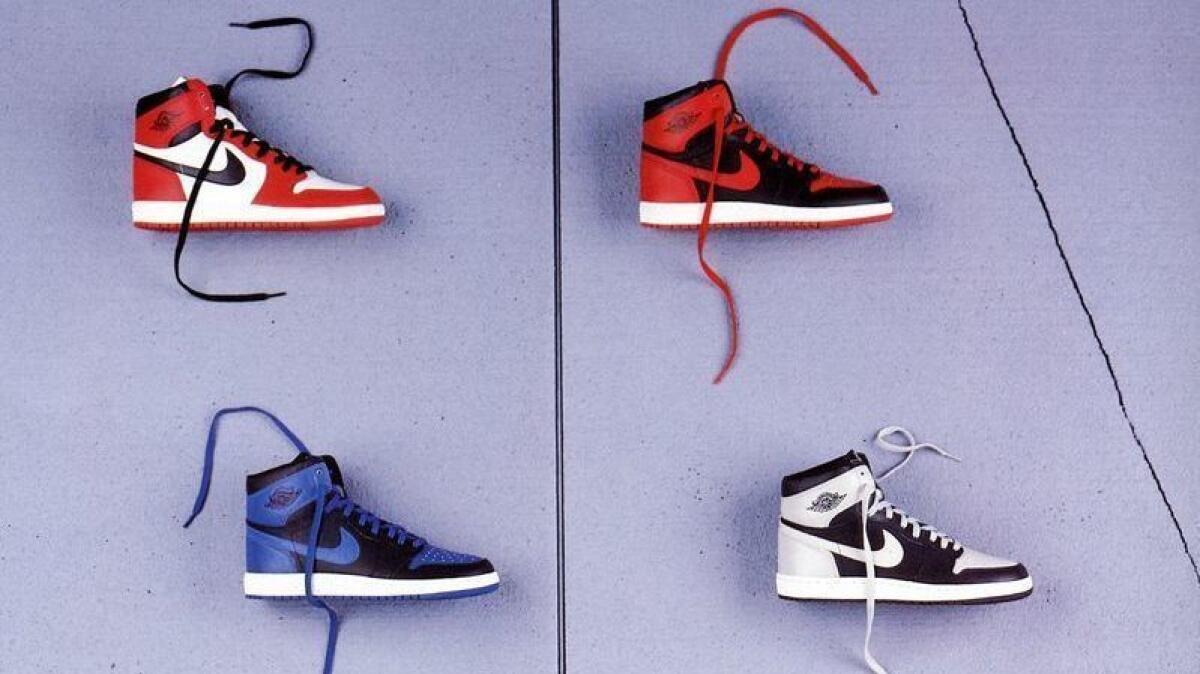
The original Air Jordan will forever be the signature shoe that all other signature shoes — and sports endorsement deals — will be measured against, just as all marquee players will be compared to Chicago Bulls superstar Michael Jordan himself. The Air Jordan I was released in 1985 and offered in nine high-top colorways and low-top versions. It was the black and red version — worn by Jordan in the 1985 All-Star slam-dunk contest — that caught the world’s attention. Some 34 years later, the Jordan Brand is still garnering attention — and serious dollars — generating $2.86 billion in revenue for parent company Nike in 2018.
1986 | Converse Weapon
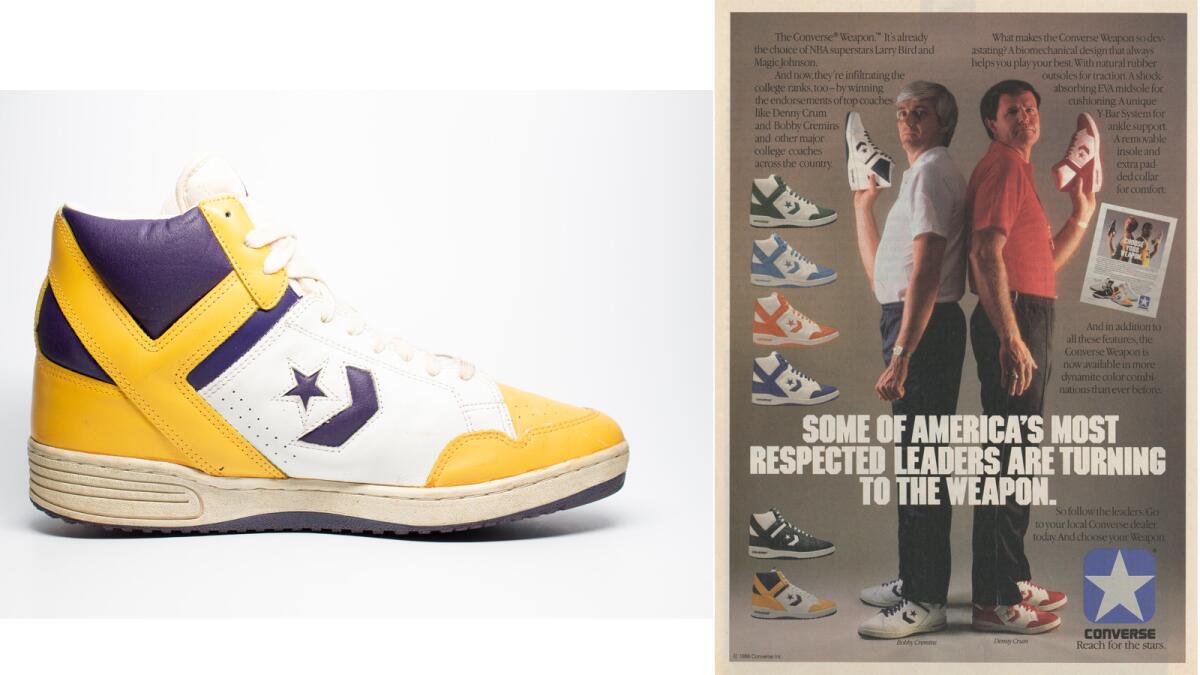
“Choose your Weapon” was the tagline for this shoe that had two of the biggest names in ’80s basketball — the Boston Celtics’ Larry Bird and the Lakers’ Magic Johnson — facing off against each other on court as well as in print and TV ads while clad in team-colorway versions of the exact same sneaker. The adversarial ad campaign would eventually feature others, but it was the rivalry — and later friendship — between the stars that put the Weapon on the map.
1988 | Air Jordan III
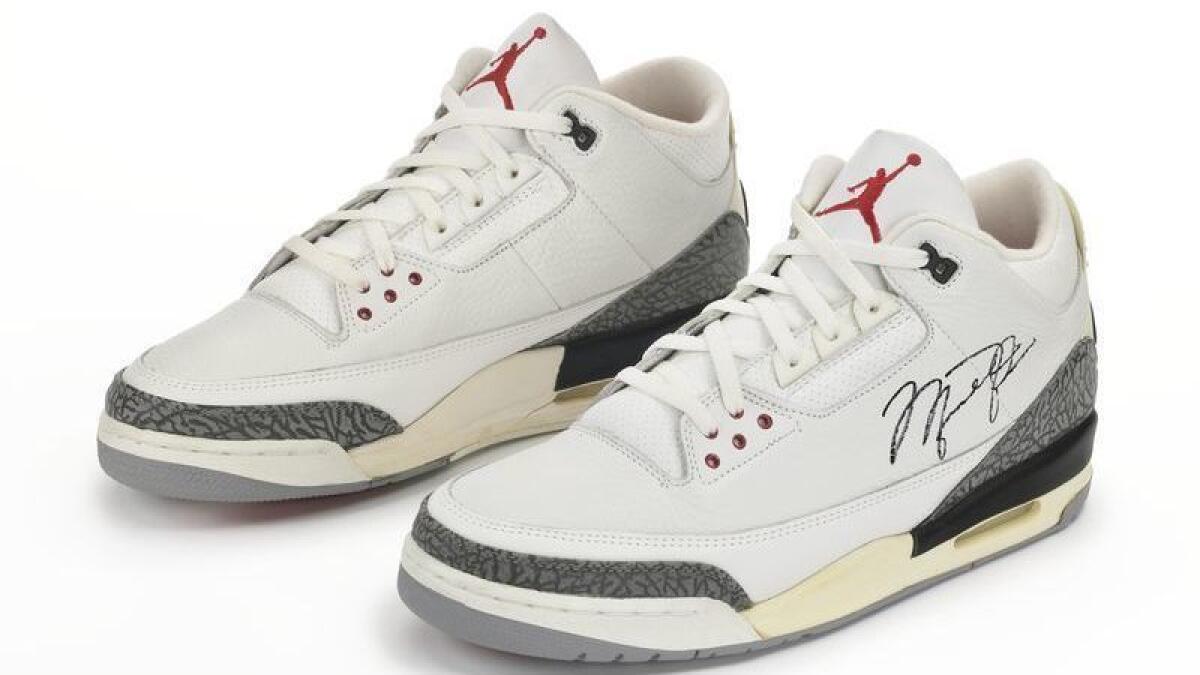
What makes this iteration of the Air Jordan notable — apart from it being the first mid-top style in the lineup — was that it replaced the “Wings” logo of the I and II with the Jumpman logo — depicting Jordan in silhouette with wide-stretched legs and arm elevated — that would eventually become instantly recognizable shorthand for the brand.
1991 | Reebok Pump Omni Lite
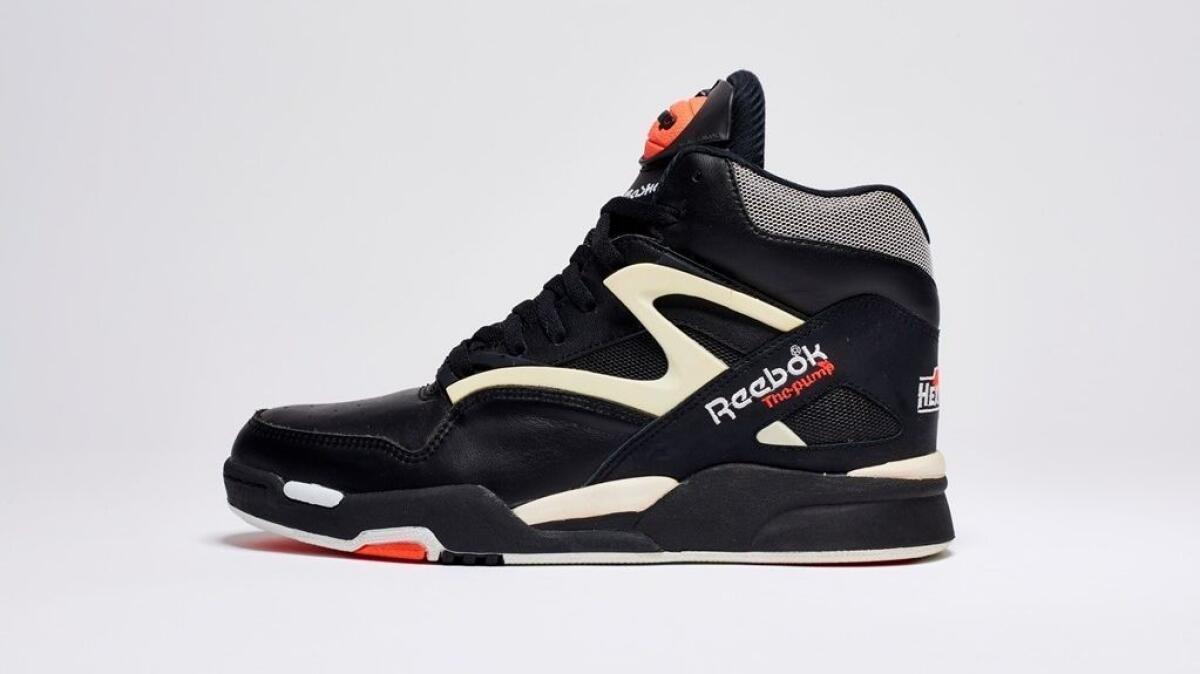
The first version of the Reebok Pump, a sneaker that used internal air chambers to adjust the shoe’s fit, hit the market in late 1989, but it wasn’t until the Boston Celtics’ Dee Brown wore a pair of Reebok Pump Omni Lites during the 1991 NBA All-Star weekend’s slam-dunk contest — stopping to inflate his shoes before delivering a now legendary no-look dunk — that propelled it into basketball — and pop-culture — popularity. Sure, it wasn’t, technically speaking, a signature sneaker for Brown, but his name — and the Reebok Pump’s — will forever be remembered together.
1995 | Nike Air Swoopes
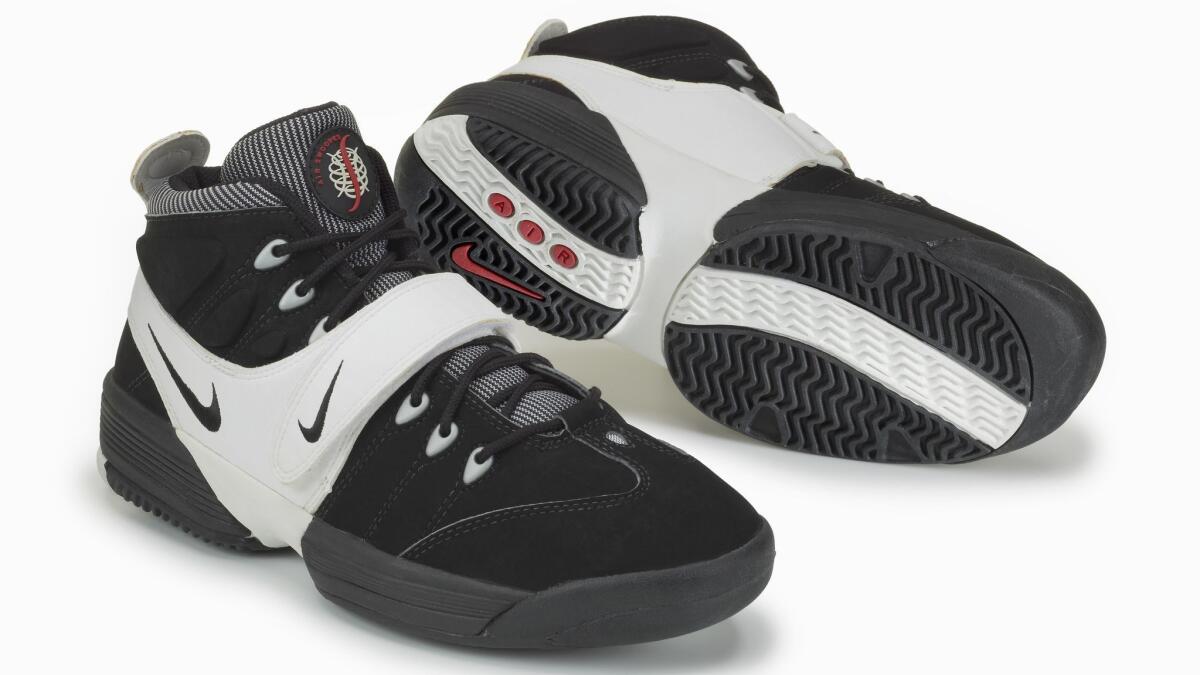
The year before she had the distinction of being the first player signed to the WNBA, Sheryl Swoopes became the first woman (and just the second athlete after Michael Jordan a decade earlier) to get a Nike signature shoe. Designed in collaboration with Swoopes, the debut Nike Air Swoopes had a midfoot stability strap with structural stitching, a stylized “S” emblazoned on the sole and a basketball-entwined “S” logo on the tongue.
1997 | Adidas KB8
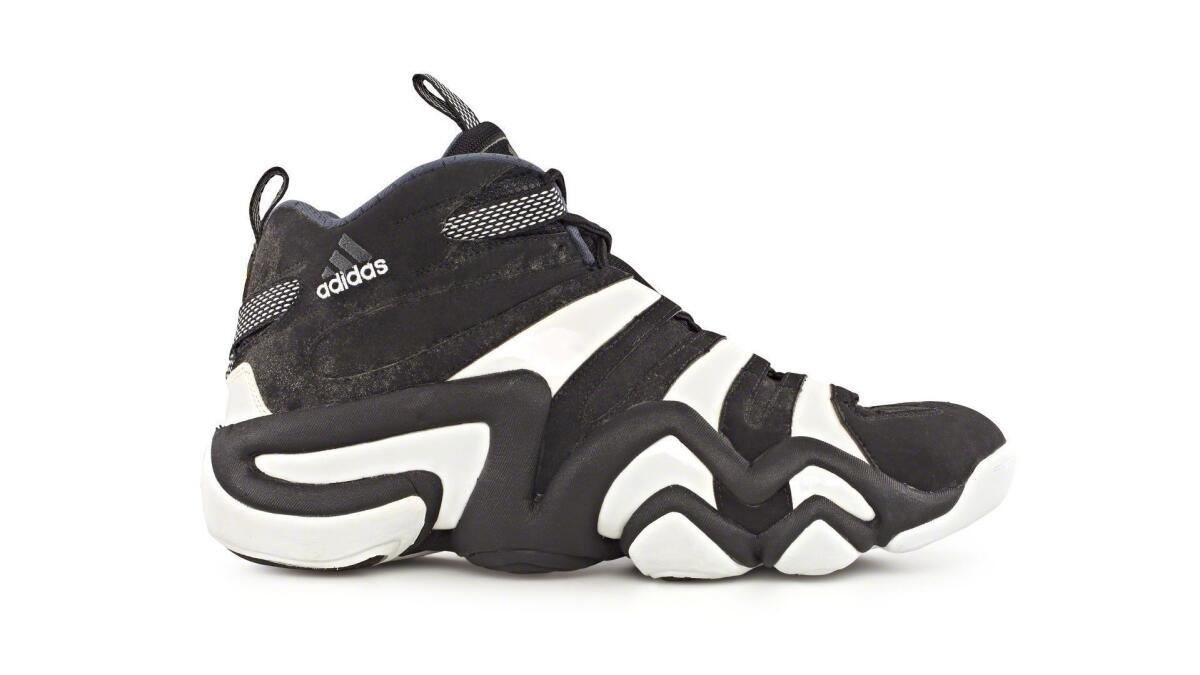
He might have been a “Laker for life,” but before signing with Nike, Kobe Bryant began his shoe-endorsement career with Adidas. The first sneaker to bear Bryant’s name, the KB8 (later known as the Crazy 8), was released in 1997 and featured a synthetic leather upper with a textile lining, a molded EVA insole and Torsion system plate in the midfoot.
2003 | Nike Air Zoom Generation (a.k.a. the LeBron 1)
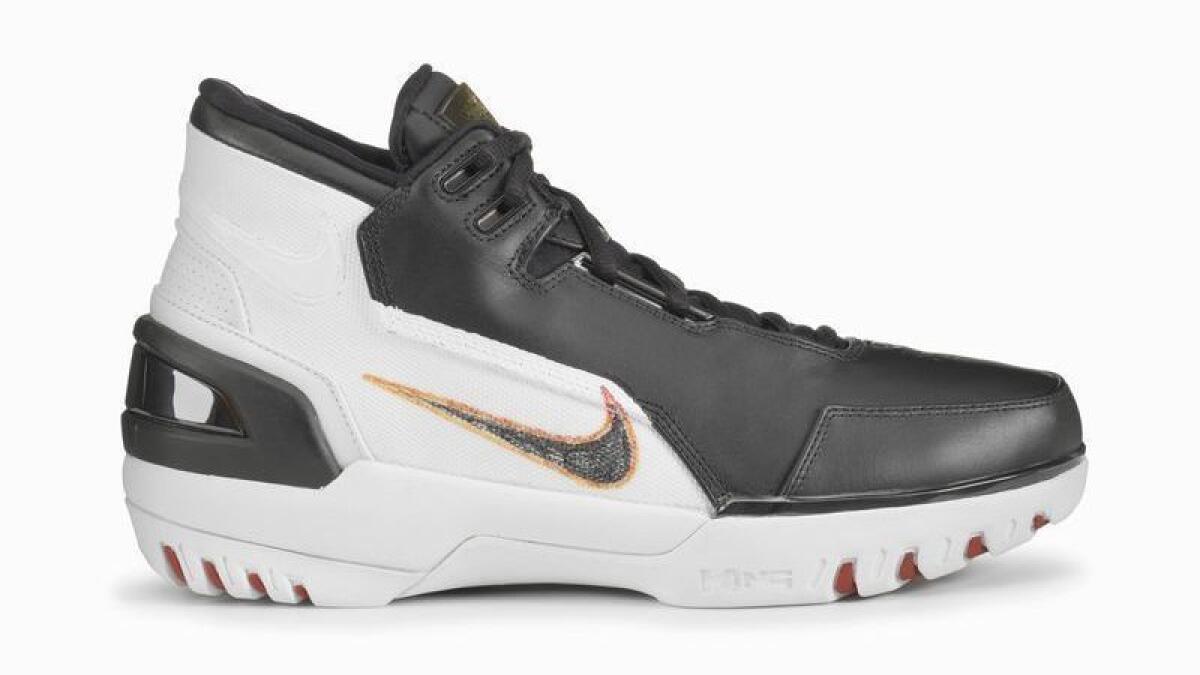
LeBron James is up to 16 signature shoes — and counting — with Nike, and the one that started it all was the the Air Zoom Generation. Designed by Aaron Cooper and Tinker Hatfield, among others, the shoe’s symbolic nods to the player included an outsole with a lion-claw design referencing an animal James has had an affinity for since kindergarten.
2012 | Li-Ning Way of Wade
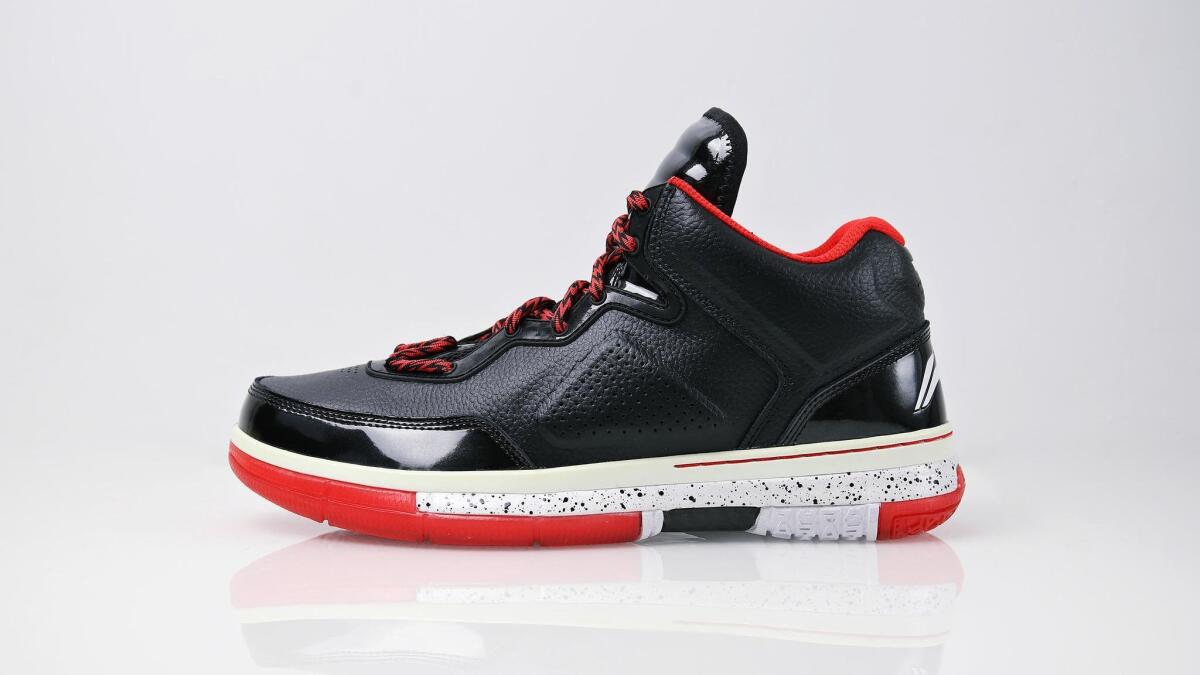
Dwyane Wade wasn’t the first NBA player to sign with Chinese footwear brand Li-Ning; others included his Miami Heat teammate Shaquille O’Neal and the Philadelphia 76ers Evan Turner. However, Wade was the first to get his own sub-brand — Way of Wade — that includes apparel alongside performance and lifestyle footwear. He signed with the company in 2012, with his first sneaker hitting the U.S market (in limited quantities) the following year. In 2018, at the same time as his seventh signature shoe was unveiled in Beijing, it was announced that he signed a lifetime endorsement deal.
2015 | Under Armour Curry One

The 2013 deal between Stephen Curry and Baltimore-based Under Armour wasn’t a first for either. The Golden State Warriors standout star previously had an endorsement deal with Nike, and Under Armour had signed its first basketball player, Brandon Jennings, in 2008. However, something about the two clicked, and when Curry stepped onto the court on Jan. 9, 2015, he wasn’t just debuting his first signature shoe, he was kicking off a new era in basketball branding — and proving that the legacy labels didn’t have a lock on the league.
2018 | Nike Adapt BB

If a movie could have a signature shoe, that shoe would be the self-lacing Nikes inspired by the ones Marty McFly (played by Michael J. Fox) puts on in the 1989 film “Back to the Future Part II.” There have actually been three versions to date, the first being the high-top Nike Air Mag (it didn’t do the self-lacing thing, but it did light up), 1,500 pairs of which were auctioned in 2011 to help fund the Michael J. Fox Foundation’s fight against Parkinson’s disease. A sneaker sequel of sorts followed in October 2017 (though with a $720 price tag); the HyperAdapt 1.0 seemed as unattainable to most fans as a time-traveling DeLorean. This January, Nike unveiled the Adapt BB ($350), which finally makes the computer-driven, self-lacing (well, laceless, technically) shoe a reality. The BB in the name — it may come as no surprise — is short for basketball, and the Boston Celtics’ Jayson Tatum and Los Angeles Lakers’ Kyle Kuzma were among the hoopsters who have already heightened awareness of the shoes by wearing them on court. It’s set to hit retail Sunday — the same day the NBA All-Star game takes place in Charlotte, N.C.
For more musings on all things fashion and style, follow me at @ARTschorn




